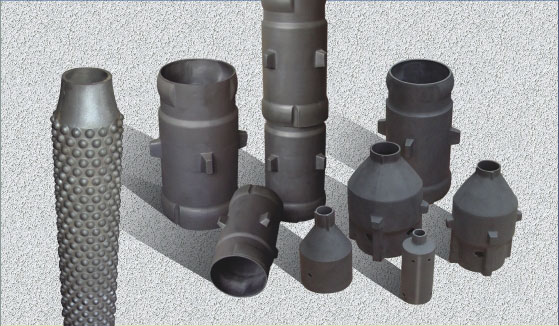As mentioned earlier, silicon carbide ceramic is a compound with strong covalent bond. Therefore, the diffusion rate during sintering is quite low. According to the research results of J.D. Hon, the self diffusion coefficients of C and Si are very small even at a high temperature of 2100 ℃. Therefore, it is difficult to sinter, and densification can only be achieved through additives or external pressure or siliconizing reaction. At present, the main methods of preparing high-density SiC ceramics are pressureless sintering, hot pressing sintering, hot isostatic pressing sintering and reaction bonded sic. SiC components with complex shape and large size can be made by pressureless sintering process. Therefore, it is considered to be the most promising sintering method of silicon carbide ceramic. The hot pressing sintering process can only prepare simple shape SiC components , and the number of products prepared in one hot sintering process is very small, so it is not conducive to commercial production. Although the hot isostatic pressing process can obtain SiC ceramic with complex shapes, the blank must be encapsulated, so it is difficult to achieve industrial production. Complex sic ceramic can be prepared by reaction bonded, and the sintering temperature is low. However, the high-temperature performance of reaction bonded sic is poor. Table 1 shows some properties of silicon carbide ceramic in pressureless sintering, hot pressing sintering, hot isostatic pressing sintering and reaction bonded. Obviously, the properties of SiC ceramics vary with different sintering methods. Generally speaking, the comprehensive properties of pressureless sintered SiC ceramics are superior to reaction bonded SiC, but inferior to hot pressed and hot isostatic pressed SiC ceramics.
Sintering Methods and Performance Comparison of SiC Ceramics
| sintering method | sintered | hot pressing | hot isostatic pressing | reaction bonded |
| Bending strength(MPa) | ||||
| 20℃ | 410 | 640 | 640 | 380 |
| 1400℃ | 410 | 650 | 610 | 300 |
| weibull modulus | 7-10 | 8-10 | 11-14 | 10-12 |
| Elastic modulus (GPa) | 410 | 450 | 450 | 350 |
| Thermal conductivity (W/m · K) | ||||
| 20℃ | 110 | 130 | 220 | 140 |
| 1000℃ | 45 | 45 | 50 | 50 |
| Bulk density g/cm ³ | 3.12 | 3.21 | 3.21 | 3.05 |
